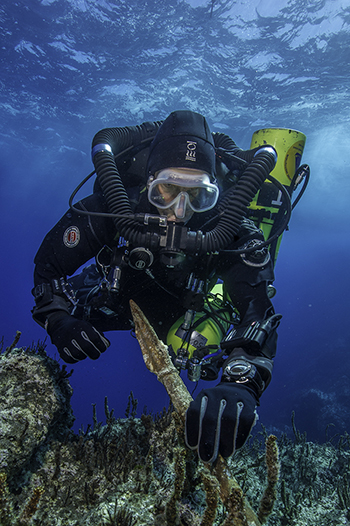More than a century ago, a group of sponge fishermen were making their way home to theGreek island of Syme when they were caught in a violent storm. After being blown off course, they managed to anchor on a shallow shelf near a small island called Antikythera. After riding out the storm, the crew decided to make good of a bad situation and explored the new area. But what they discovered was of far greater value than a few sea sponges: an ancient shipwreck, buried for millennia beneath ocean sediment.
After a grueling nine months of intense work, a trove of ancient treasures were recovered by the divers, including statues made of bronze and marble, jewelry, furniture and ancient glassware which were all brought to a museum in Greece. Many of the artefacts were fragmented, so archeologists gradually tried to piece them together. At some point, a corroded lump that was thought to belong to one of the statues cracked open, revealing what would later be identified as one of the most complicated antiques in existence: the Antikythera Mechanism.
Image credit: Ze’ev Barkan, Antikythera zodiac, via Flickr. CC by 2.0
This ancient clockwork device is thought to have been constructed around 87 B.C.E, but was lost in 76 B.C.E when the ill-fated cargo ship carrying it sunk. It’s thought that this bronze instrument was a kind of mechanical “computer” used to calculate the positions of astronomical objects. The mechanism was composed of at least 30 different gears, but various pieces are missing today. That’s why a team of divers and archeologists recently returned to the wreck, embarking on a new exploratory project which they hoped would yield new antiquities.
After spending over a month excavating the wreckage, with the help of a $1.3 million exosuit, the team recovered a series of intriguing finds, demonstrating that much of the cargo still remains preserved beneath the sediment. Furthermore, many components of the ship are still attached, such as anchors and rigging rings, proving that some parts are still intact. Bits and pieces of the wreckage are also strewn across a huge area, some 300 meters of seafloor, suggesting that the ship was considerably larger than originally believed, maybe even 50 meters long.
Among the findings were a ceramic table jug, a bronze rigging ring and part of an ornate bed. But the most remarkable treasure by far was a giant, two-meter-long bronze spear. This was probably far too heavy to have been used as a weapon, so the researchers believe it may be part of a statue, perhaps the goddess Athena. Although they didn’t find the missing pieces of the Antikythera Mechanism, the team will return to the wreck next year to search it further. “We have a lot of work to do at this site to uncover its secrets,” archeologist Theotokis Theodoulou said in a news release.
Image credit: Brett Seymour/ Return to Antikythera 2014.
[Via BBC News and Woods Hole Oceanographic Institution]









